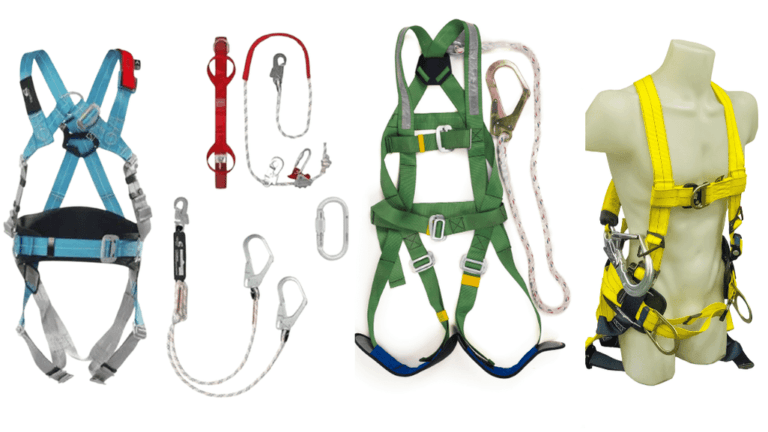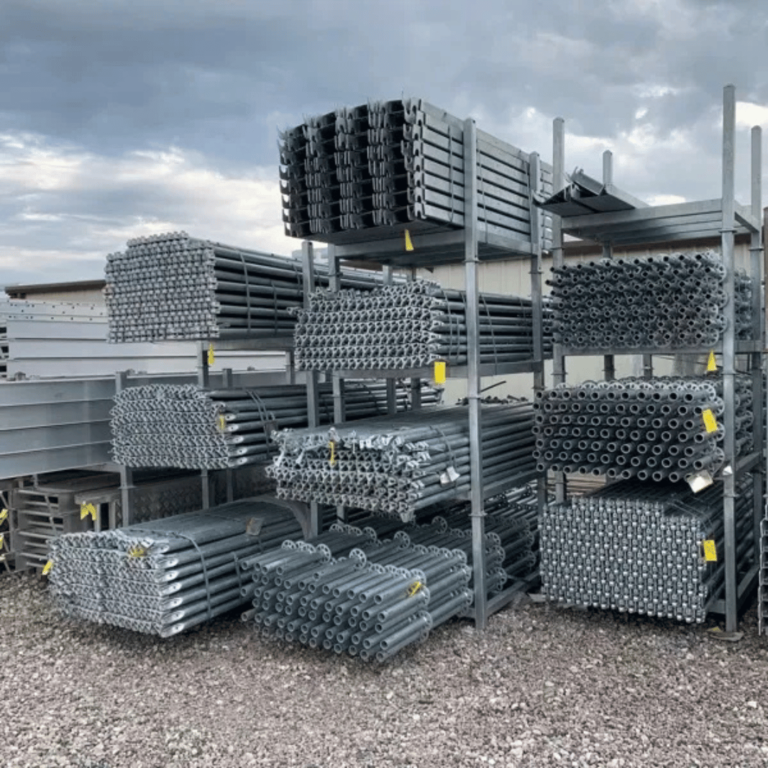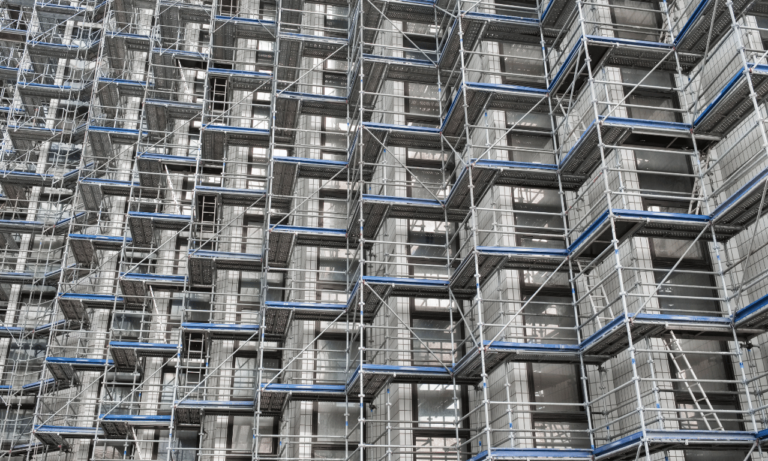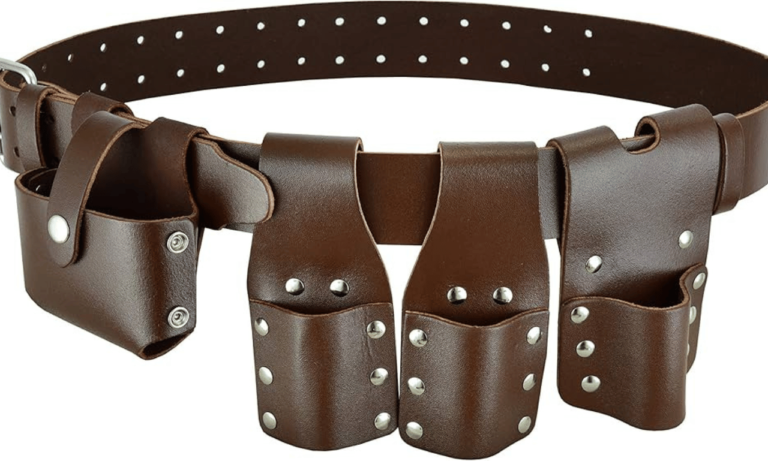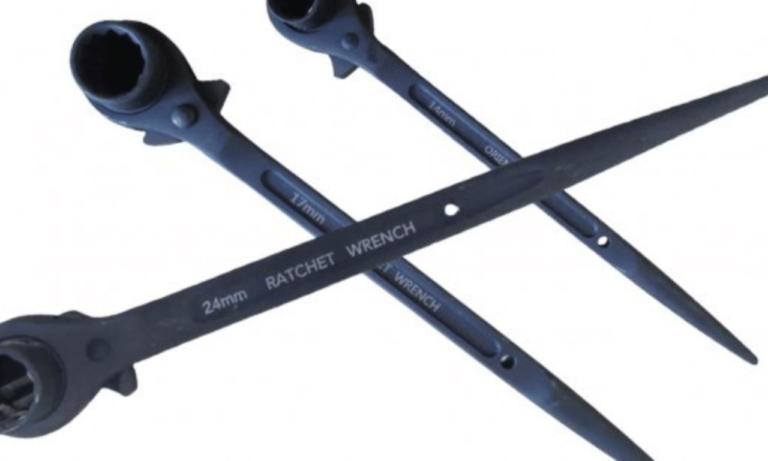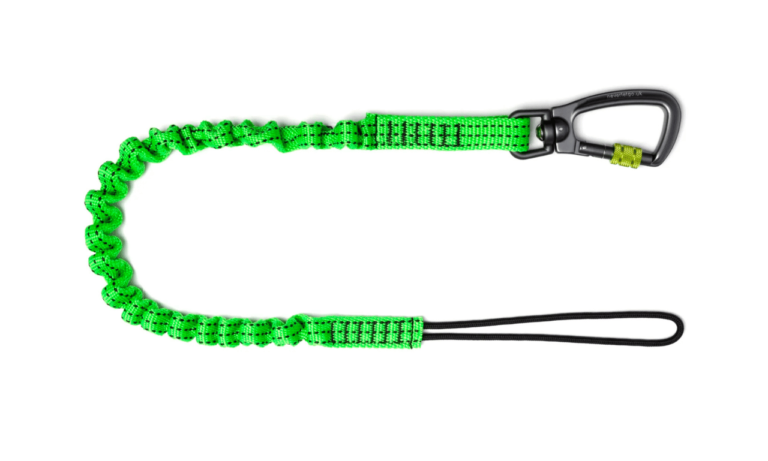Phone:
(+65)8319-0742
If you work in construction, you know that having the right tools is crucial for getting the job done efficiently. One such tool that plays a vital role in reinforcing concrete structures is the steel fixers nips. These nips are specially designed construction tools used for rebar tying, providing a secure grip for twisting and cutting wires. With steel fixers nips, you can ensure the strength and durability of your concrete projects.
When it comes to steel fixer equipment, one brand that stands out is NLG. Their steel fixers nips are known for their quality and reliability, making them a popular choice among construction professionals. NLG also offers the Nips Tool Tethering Kit, which eliminates the need for tool tethering and allows you to focus on the task at hand without any distractions.
Ready to learn more about steel fixers nips and their importance in construction? Read on to discover everything you need to know!
Key Takeaways
Steel fixers nips are essential tools used in construction for rebar tying and reinforcing concrete structures.
They provide a secure grip and allow for efficient twisting and cutting of wires.
NLG offers high-quality steel fixers nips and the Nips Tool Tethering Kit to enhance productivity and safety on the job.
Steel fixers nips ensure the strength and durability of concrete structures by securely fastening steel bars and mesh sheeting.
Proper safety measures, including personal protective equipment, are crucial when working with steel fixers nips.
What Are Steel Fixers Nips?
Steel fixers nips, also known as steel fixer pliers, are specialized construction tools used by construction professionals in the process of rebar tying. These versatile tools are designed to grip and twist wires, securing steel bars and mesh sheeting in concrete structures.
Steel fixers nips provide a strong hold and allow for precise and efficient work. Their rugged construction and ergonomic design make them ideal for the demanding tasks involved in construction and steel fixing. These nips are specifically engineered to withstand the rigors of rebar tying and ensure that the steel components remain securely in place.
With steel fixers nips, construction workers can easily manipulate wires, ensuring the accurate placement and alignment of steel bars and mesh sheeting. The ability to grip and twist wires effortlessly enables steel fixers to complete their tasks with speed and accuracy.
By using steel fixers nips, construction professionals can enhance the strength and stability of concrete structures. Securely tied steel components play a crucial role in reinforcing concrete, improving its load-bearing capacity and durability.
The Benefits of Steel Fixers Nips:
Strong grip for secure fastening
Ergonomic design for ease of use
Efficient wire twisting for quick and accurate work
Enhanced strength and stability of concrete structures
Steel fixers nips are essential tools for construction professionals involved in rebar tying. With their reliable performance, these pliers ensure that steel components are securely fastened, resulting in structurally sound and durable concrete structures.

The Importance of Steel Fixers Nips in Construction
When it comes to construction, steel fixers nips are essential tools that play a crucial role in ensuring the integrity and durability of concrete structures. These nips are specifically designed for tasks related to rebar tying, one of the foundational processes in construction. By securely fastening steel bars and mesh sheeting, they reinforce the building materials and enhance the overall strength of the structure.
Why are steel fixers nips so important in construction? Let’s delve deeper into their significance:
Enhanced Structural Stability
Steel fixers nips provide a secure grip when tying rebar, ensuring that steel bars and mesh sheeting are held firmly in place. This is crucial for structural concrete work as it prevents the displacement of reinforcing components, guaranteeing the stability and longevity of the building.
Improved Durability
By effectively tying rebar with steel fixers nips, construction professionals create a robust framework within the concrete structure. This reinforcement increases the strength of the building materials, making them more resistant to external forces such as weather conditions and daily wear and tear. As a result, the structure maintains its structural integrity for years to come.
Optimal Building Material Utilization
Steel fixers nips enable accurate and precise rebar tying, ensuring that the building materials are utilized efficiently. With proper tying techniques using these nips, there is minimal wastage of steel bars and mesh sheeting, maximizing cost-effectiveness in the construction process.
Furthermore, steel fixers nips contribute to the overall efficiency of the construction workflow. Their ergonomic design and functionality allow workers to complete rebar tying tasks quickly and effectively, reducing construction time and increasing productivity.
It is crucial for construction professionals to recognize the importance of steel fixers nips in their projects. By prioritizing the use of these specialized tools, they can ensure the quality, strength, and durability of the building materials used in their structural concrete work.
Tasks and Tools Used by Steel Fixers
Steel fixers play a vital role in the construction industry, working with various tools and materials to ensure the structural integrity of concrete projects. While Steel Fixers Nips are essential for tying steel into position, steel fixers also rely on other construction tools to complete their tasks efficiently.
Lifting and Carrying Steel Bars and Mesh Sheeting
Steel fixers often handle heavy steel bars and mesh sheeting, requiring physical strength and proper lifting techniques. Using manual handling equipment, such as cranes and hoists, can aid in safely moving and positioning these materials.
Positioning Steel Components with Spacers
When installing steel bars and mesh sheeting, steel fixers utilize spacers to ensure the correct positioning and spacing of steel components. These spacers help maintain the required reinforcement standards and prevent shifting or misalignment during concrete pouring.
Cutting Steel to Size with Angle Grinders or Bolt Cutters
Accurate cutting of steel bars and mesh sheeting is crucial to achieve proper fit and alignment. Steel fixers often use angle grinders or bolt cutters to trim steel materials to the required size before installation. These tools enable precise and efficient cutting, saving time and ensuring a precise fit.
Working with Wire and Nip Tools
Wire plays a significant role in steel fixing, used to secure steel bars, mesh sheeting, and other components. Steel fixers utilize nip tools, including steel fixers nips, to grip and twist wire, providing a secure fastening method. These tools enable a firm grip and twisting forearm action, ensuring the wire is securely tied to reinforce the structure.
Here is an example of the wide range of tools used by steel fixers in their work:
Construction Tools
Description
Steel Fixers Nips
Grip and twist wire for secure fastening
Angle Grinders
Cut steel bars and mesh sheeting to size
Bolt Cutters
Trim steel materials to the required size
Spacers
Position steel components correctly
Wire
Secures steel bars and mesh sheeting
Each tool contributes to the efficient and accurate execution of steel fixing tasks, ensuring the durability and strength of the concrete structures. The mastery of these tools, including steel fixers nips is crucial for steel fixers to deliver high-quality work within set timelines.
Image related to the Tools Used by Steel Fixers:
Personal Protective Equipment for Steel Fixers
Steel fixers, like any construction workers, need to prioritize safety. They should wear personal protective equipment (PPE) to ensure their well-being on the job. The use of PPE such as gloves, hard hats, safety boots, and other items is essential for safeguarding against potential hazards and creating a safe working environment.
Gloves
Gloves are crucial PPE for steel fixers as they protect hands from cuts, abrasions, and other injuries. They provide a barrier between the steel fixer’s hands and potential hazards like sharp edges or rough surfaces. Additionally, gloves offer improved grip and dexterity, enabling workers to handle materials securely and perform tasks with precision.
Hard Hat
A hard hat is a vital piece of PPE that shields steel fixers from head injuries caused by falling objects or accidental collisions. It is designed to absorb impact and distribute force, reducing the risk of severe head trauma. Steel fixers should always wear a hard hat while working on construction sites to mitigate the potential dangers associated with overhead hazards.
Safety Boots
Safety boots are essential for protecting the feet of steel fixers. They are specifically designed with reinforced materials and sturdy soles to withstand heavy objects, sharp objects, and potential injuries from slips, trips, and falls. Safety boots also provide improved traction, reducing the risk of accidents on slippery or uneven surfaces.
Other PPE
Aside from gloves, hard hats, and safety boots, steel fixers may also need to wear additional PPE depending on the specific risks present on the construction site. This can include items such as masks or respirators to protect against airborne particles, visibility vests for improved visibility, ear muffs or plugs for hearing protection, safety glasses for eye protection, and sunscreen to guard against sunburn during outdoor work.

PPE
Purpose
Gloves
Protect hands from cuts, abrasions, and injuries
Hard Hat
Shield the head from falling objects and collisions
Safety Boots
Protect feet from heavy objects, slips, and sharp hazards
Other PPE
Additional protective equipment based on site-specific risks
By wearing the appropriate personal protective equipment, steel fixers can minimize the risk of accidents and injuries, allowing them to focus on their work with confidence and ensuring their well-being throughout their construction projects.
Common Hazards and Risks in Steel Fixing
Steel fixers play an integral role in the construction industry, but their work comes with various hazards and risks that they need to be aware of. Understanding these potential dangers is crucial for maintaining a safe work environment and preventing accidents and injuries.
Construction Hazards
Working on construction sites exposes steel fixers to a range of hazards. These include **construction hazards** such as falling objects, electrical hazards, and working at heights. Steel fixers need to be cautious and follow safety protocols to minimize the risks associated with these hazards.
Workplace Risks
Steel fixing involves physical labor and working with heavy materials. Manual handling injuries are a common risk faced by steel fixers, as they frequently lift and carry heavy steel bars and mesh sheeting. Proper lifting techniques, the use of appropriate equipment, and teamwork can help reduce the likelihood of such injuries.
Slip and Fall Accidents
Steel fixers often work in uneven and slippery environments, which increases the risk of slip and fall accidents. Navigating through these areas requires caution, the use of suitable footwear with proper grip, and maintaining clear and obstacle-free pathways.
Risks Associated with Steel Fixers Nips
The use of steel fixers nips in the rebar tying process presents its own set of risks. Steel fixers nips are designed for gripping and twisting wires, which can result in cuts and injuries if not handled properly. It is essential to prioritize hand safety by wearing appropriate gloves and using the nips with care.
Creating a safe working environment for steel fixers requires a combination of training, proper safety procedures, and adherence to regulations. By being proactive in identifying and addressing these hazards and risks, construction companies can prioritize the well-being of their steel fixers and promote a culture of safety.
Hazard
Risk
Preventive Measures
Falling Objects
Potential injuries from objects falling from height
Implement measures such as safety nets, guardrails, and hard hats
Manual Handling
Injuries from lifting and carrying heavy steel bars and mesh sheeting
Provide training on proper lifting techniques, use mechanical aids when necessary, and encourage teamwork
Slips and Falls
Potential injuries from navigating uneven and slippery surfaces
Maintain clear and obstacle-free pathways, use appropriate footwear with proper grip
Steel Fixers Nips
Possible cuts and injuries from improper use
Wear appropriate gloves, handle nips with care, and follow manufacturer’s guidelines

Tips for Using Steel Fixers Nips
Using steel fixers nips effectively requires a combination of skill, technique, and proper maintenance. Here are some tips to help you get the most out of your steel fixers nips:
Master the Technique: To achieve the best results, it’s important to master the technique of gripping and twisting wire. Hold the nips firmly and use a smooth, controlled motion to twist the wire around the rebar. Practice makes perfect, so take the time to develop your technique.
Regular Maintenance: Keep your steel fixers nips in top condition by performing regular maintenance. Clean the nips after each use to remove any debris or residue. Periodically check the cutting edges for signs of wear and sharpen them as needed to maintain good sharpness.
Use the Right Wire: Ensure that you are using the appropriate type of wire for your project. Steel fixers nips are designed to handle both soft and hard wire, but using the correct wire for the task at hand will make the job easier and more efficient.
Safety First: Always prioritize safety when using steel fixers nips. Wear appropriate personal protective equipment, such as gloves and safety glasses, to protect yourself from potential injuries. Be mindful of your hand placement and avoid placing your fingers near the cutting edges.
Store Properly: When not in use, store your steel fixers nips in a safe and dry place. Keeping them in their original packaging or a designated tool box will protect them from damage and ensure they are ready for use when needed.
By following these tips, you can ensure that your steel fixers nips perform optimally and have a long service life, making your construction tasks more efficient and effective.
Purchasing Steel Fixers Nips
When purchasing steel fixers nips, there are several factors to consider to ensure you make the right choice for your needs. Here are some tips to help you make an informed decision:
Quality of Materials: Look for steel fixers nips made from high-quality steel. Tools made from durable materials will withstand the demands of construction work and provide reliable performance over time. Check for features like oil-hardened steel, which enhances the tool’s durability and cutting efficiency.
Brand Reputation: Consider purchasing from reputable brands known for their quality and reliability. Brands like NLG are well-regarded in the construction industry for their high-quality steel fixers nips. Research customer reviews and testimonials to gauge the performance and durability of the tools.
Ergonomic Design: Choose steel fixers nips with an ergonomic design that fits comfortably in your hand. Tools with ergonomic handles reduce hand fatigue and improve control, making them easier to use for extended periods. This is especially important for tasks that require repetitive twisting and cutting.
Cutting Edge Quality: Pay attention to the quality of the cutting edges. Look for nips with specially hardened cutting edges that can handle both soft and hard wire efficiently. Sharp and durable cutting edges ensure clean cuts and reduce the need for frequent sharpening.
Shipping Costs and Availability: Consider the shipping costs and availability of the steel fixers nips. Some suppliers may offer free shipping or discounts on bulk purchases, which can help reduce overall costs. Ensure that the supplier can deliver the tools within a reasonable timeframe to avoid delays in your construction projects.
Warranty and Support: Check if the steel fixers nips come with a warranty or guarantee. A good warranty indicates the manufacturer’s confidence in their product’s quality. Additionally, consider the availability of customer support in case you encounter any issues with the tool.
By considering these factors, you can select steel fixers nips that meet your specific needs and provide reliable performance for your construction projects. Investing in high-quality tools will enhance your efficiency and contribute to the success of your work.
By following this approach, the new sections will seamlessly integrate into the existing article, providing valuable information while maintaining the same tone and style.
Return to Work Suggestions for Steel Fixers
In the unfortunate event of an injury, it is crucial for steel fixers to follow return to work suggestions to effectively recover and resume their duties in a safe and productive manner. These suggestions are designed to facilitate a smooth transition back into the workforce, taking into account the individual’s capabilities and the nature of their work.
Starting with Suitable Duties
Returning to work after an injury may require steel fixers to start with light tasks that can be comfortably performed without exacerbating their condition. This gradual approach allows the individual to rebuild their strength and stamina, while also minimizing the risk of additional injuries.
During the initial stages of returning to work, it is important for employers and supervisors to assign appropriate duties that align with the steel fixer’s rehabilitation program. These duties should focus on tasks that can be reasonably accomplished while gradually increasing the workload as the individual’s capacity improves.
By providing suitable duties, employers can support the steel fixer’s recovery process and facilitate a smooth reintegration into their regular job responsibilities.
Collaborating with Rehabilitation and Medical Providers
Successful return to work for steel fixers often requires close collaboration between employers, rehabilitation providers, and medical professionals. This collaborative approach ensures that the individual’s specific needs and requirements are taken into account throughout the recovery process.
Rehabilitation providers, such as physical therapists or occupational therapists, play a vital role in assessing the steel fixer’s functional capabilities and recommending appropriate work modifications or accommodations. Their expertise helps in determining the suitable duties and provides guidance on the individual’s progress.
Additionally, continuous communication between employers and medical professionals is essential to ensure that the steel fixer’s rehabilitation program aligns with their medical treatment plan. This collaborative effort helps in managing expectations, monitoring progress, and making necessary adjustments to the return to work process.
Host Employment as an Option
In situations where suitable duties cannot be provided within the steel fixer’s regular workplace, host employment can be considered as an alternative. Host employment involves placing the individual in a different work environment temporarily, where they can perform tasks that align with their capabilities and contribute meaningfully to the host employer’s operations.
During host employment, the steel fixer can continue their rehabilitation under the supervision and support of the host employer and rehabilitation providers. This arrangement allows them to maintain their skills, build confidence, and gradually transition back to their pre-injury role.
Host employment offers a valuable opportunity for steel fixers to remain engaged in the workforce while working towards their full recovery. It provides a supportive environment and helps them regain their physical and mental well-being, ultimately preparing them for a successful return to their regular job responsibilities.
In conclusion, following return to work suggestions is crucial for steel fixers to effectively recover from injuries and resume their duties. Starting with suitable duties, collaborating with rehabilitation and medical providers, and considering host employment as an option are key steps in facilitating a safe and successful return to work for steel fixers.
Conclusion
Steel fixers nips are integral construction tools that play a crucial role in rebar tying and reinforcing concrete structures. These tools provide the necessary gripping and twisting capabilities to securely position steel components, ensuring the strength and durability of the resulting construction projects.
However, it is essential for steel fixers to prioritize safety by implementing proper personal protective equipment and following workplace guidelines to mitigate potential hazards. By doing so, they can safeguard their well-being and maintain productivity in their demanding profession.
In summary, steel fixers nips are indispensable tools in the construction industry. When used in conjunction with appropriate safety measures and adhering to return to work guidelines, steel fixers can effectively contribute to the successful completion of projects while minimizing risks and maximizing efficiency.
FAQ
What are steel fixers nips?
Steel fixers nips, also known as steel fixer pliers, are specialized tools used in construction for rebar tying and reinforcing concrete structures. They provide a secure grip and allow for efficient twisting and cutting of wires.
Features of Steel Fixers Nips
Steel fixers nips are specialized tools designed for rebar tying and reinforcing concrete structures. These tools are crafted from high-quality steel, ensuring durability and longevity even under the demanding conditions of construction work. The robust construction of steel fixers nips allows them to withstand the rigors of daily use, making them a reliable choice for professionals.
One of the standout features of steel fixers nips is their specially hardened cutting edge. This design element ensures that the nips can efficiently handle both soft and hard wire, providing a clean and precise cut every time. The cutting edges are engineered to maintain their sharpness over extended periods, reducing the need for frequent replacements and ensuring consistent performance.
The ergonomic design of steel fixers nips is another key feature. These tools are designed to fit comfortably in the hand, reducing fatigue during prolonged use. The ergonomic handles provide a secure grip, allowing for precise control when twisting and cutting binding wire. This design consideration not only enhances efficiency but also contributes to the safety of the user.
In summary, steel fixers nips are essential tools for construction professionals, offering a combination of durability, precision, and comfort. Their high-quality steel construction, specially hardened cutting edges, and ergonomic design make them indispensable for tasks involving rebar tying and reinforcing concrete structures.
What is the importance of steel fixers nips in construction?
Steel fixers nips play a crucial role in construction, particularly in tasks related to rebar tying. They ensure that steel bars and mesh sheeting are securely fastened, reinforcing the concrete structures and enhancing their strength and durability.
What tasks and tools are used by steel fixers?
Steel fixers use a variety of tasks and tools in their work, including lifting and carrying steel bars and mesh sheeting, using spacers to position steel components, and cutting steel to size using angle grinders or bolt cutters. However, the use of steel fixers nips is essential for tying steel into position, involving gripping and a twisting forearm action.
What personal protective equipment should steel fixers wear?
Steel fixers should wear personal protective equipment such as gloves, hard hats, safety boots, and other items like masks, visibility vests, ear muffs/plugs, safety glasses, and sunscreen. These measures help protect against potential hazards and ensure a safe working environment.
What are the common hazards and risks in steel fixing?
Steel fixers face various hazards and risks in their work, including potential slips, trips, and falls from navigating uneven surfaces and obstacles, as well as manual handling injuries from lifting and carrying heavy steel bars and mesh sheeting. The use of steel fixers nips also carries the risk of cuts and injuries from the twisting and cutting actions involved.
What are the return to work suggestions for steel fixers?
In the event of an injury, steel fixers can follow return to work suggestions to effectively recover and resume their duties. This may involve starting with light tasks and gradually increasing workload as capacity improves. Rehabilitation and collaboration with employers and medical providers are essential. If suitable duties cannot be provided, steel fixers may be placed in host employment until they can return to their pre-injury role.


